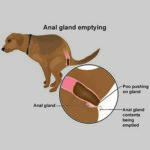How To Get Sperm From A Dog For Artificial Insemination
Unleashing the Secrets of Artificial Insemination with Dog Sperm
Artificial insemination is a common practice in animal breeding, including dogs. While natural mating may be preferred in some cases, such as for breeders who prioritize temperament and behavior, artificial insemination can offer many benefits for both male and female dogs, especially when it comes to genetic diversity, disease control, and convenience. However, getting sperm from a dog for artificial insemination is not as simple as collecting semen from a human or a bull. It requires specialized knowledge, skills, equipment, and techniques that must be done safely and ethically. In this article, we will explore the ins and outs of how to get sperm from a dog for artificial insemination.
First things first: why would you want to get sperm from a dog for artificial insemination? There are several reasons why you might choose this method over natural mating:
– You want to breed your female dog with a male dog that is not available or feasible for natural mating, due to distance, health issues, or behavioral problems.
– You want to preserve the genetic material of a valuable male dog for future breeding purposes, even if he is no longer able or willing to mate naturally.
– You want to avoid the risks of sexually transmitted diseases (STDs) that can be transmitted during natural mating, by using fresh or frozen semen that has been screened and tested for STDs.
– You want to increase your chances of success in achieving pregnancy by controlling the timing and quality of semen used for insemination.
Now that we have established the benefits of artificial insemination with dog sperm, let’s dive into the nitty-gritty of how to obtain it.
Step 1: Selecting a Suitable Donor Dog
The first step in getting sperm from a dog for artificial insemination is choosing the right donor dog. This involves considering factors such as:
– Age: Ideally, a donor dog should be in his prime reproductive age, which is usually between 2 and 7 years old. However, some older or younger dogs may still be viable donors if they have good semen quality.
– Health: A donor dog should be free of any infectious or hereditary diseases that could affect the quality or safety of his semen. He should also be up-to-date on vaccinations and deworming.
– Temperament: A donor dog should have a good temperament that is compatible with the female dog and the breeding environment. He should not be aggressive, fearful, or overly submissive.
– Breed standards: A donor dog should meet the breed standards for his breed, including physical appearance, conformation, and genetic traits. This can help ensure that the offspring will have desirable characteristics.
Step 2: Preparing the Donor Dog for Semen Collection
Once you have selected a suitable donor dog, you need to prepare him for semen collection. This involves several steps:
– Progesterone testing: If you are using fresh semen for insemination, you need to determine the optimal time for collection based on the female dog’s ovulation cycle. This can be done by measuring her progesterone levels through blood tests or vaginal swabs. Once the progesterone level reaches a certain threshold, usually around day 10-14 of the cycle, it is time to collect semen from the male dog.
– Abstinence: The donor dog should abstain from any sexual activity or ejaculation for at least 48 hours before collection. This allows his sperm count and motility to reach optimal levels.
– Hygiene: The donor dog should be bathed and groomed before collection to ensure cleanliness and comfort. His genital area should be cleaned with warm water and mild soap, but not antiseptics or disinfectants that could harm the sperm.
– Conditioning: The donor dog may need some conditioning or training to become accustomed to the semen collection process. This can involve using a teaser bitch, a dummy mount, or other stimuli that mimic natural mating.
Step 3: Collecting the Semen from the Donor Dog
Now comes the tricky part: collecting sperm from the donor dog. There are several methods that can be used for this purpose, depending on the availability of equipment and expertise:
– Manual stimulation: This is the most common method for obtaining semen from a dog. It involves manually stimulating the dog’s penis until he ejaculates into a sterile container. This can be done with or without a female dog present, depending on the donor dog’s preference and behavior. The collector should wear gloves and use a water-based lubricant to avoid contamination and discomfort.
– Electroejaculation: This method uses electrical stimulation to induce ejaculation in male dogs who cannot ejaculate voluntarily or have low sperm counts. It requires specialized equipment and training, and should only be done by experienced professionals who can monitor the dog’s vital signs and prevent injury or distress.
– Transrectal massage: This is a less invasive method that involves massaging the prostate gland through the rectum to stimulate ejaculation. It requires anesthesia and ultrasound guidance to ensure accuracy and safety.
Regardless of the method used, the collected semen should be evaluated for quality and quantity before being used for insemination. This can be done through various tests such as sperm count, motility, morphology, viability, acrosomal integrity, and bacterial culture.
Step 4: Storing and Transporting the Semen
Once you have obtained semen from a donor dog, you need to store it properly to maintain its viability and fertility. There are two main options for storing canine semen:
– Fresh semen: This is semen that is used immediately after collection without any processing or preservation. It can be delivered directly into the female dog’s reproductive tract through vaginal or transcervical insemination. Fresh semen has a shorter lifespan than frozen semen, usually around 24-48 hours.
– Frozen semen: This is semen that has been processed and frozen using special cryoprotectants and techniques to preserve its quality and fertility for long-term storage. Frozen semen can be stored for years or even decades, and can be shipped to other locations for use in breeding programs. However, freezing can damage some of the sperm cells and reduce their motility, so it may require higher volumes of semen or multiple inseminations to achieve pregnancy.
To store and transport canine semen, you need to follow strict protocols that ensure safety and efficacy. This includes:
– Using sterile containers and equipment that are free of contaminants.
– Labeling each sample with clear identification information such as the donor dog’s name, breed, sex, age, date of collection, and quality assessment results.
– Freezing the semen quickly and evenly using liquid nitrogen vapor or immersion techniques.
– Monitoring the temperature and pressure of the storage tanks regularly to prevent any loss or damage of the samples.
– Shipping the frozen semen in dry shippers that are designed to maintain the proper temperature during transit.
Conclusion
Artificial insemination with dog sperm can be a valuable tool in breeding programs that aim to improve genetic diversity, disease control, and reproductive efficiency. However, it requires careful planning, preparation, collection, evaluation, storage, and transportation that must be done by knowledgeable professionals who prioritize animal welfare and safety. By following the steps outlined in this article, you can increase your chances of success in getting sperm from a dog for artificial insemination. Just remember: it takes more than just a hand and a container to make puppies!



